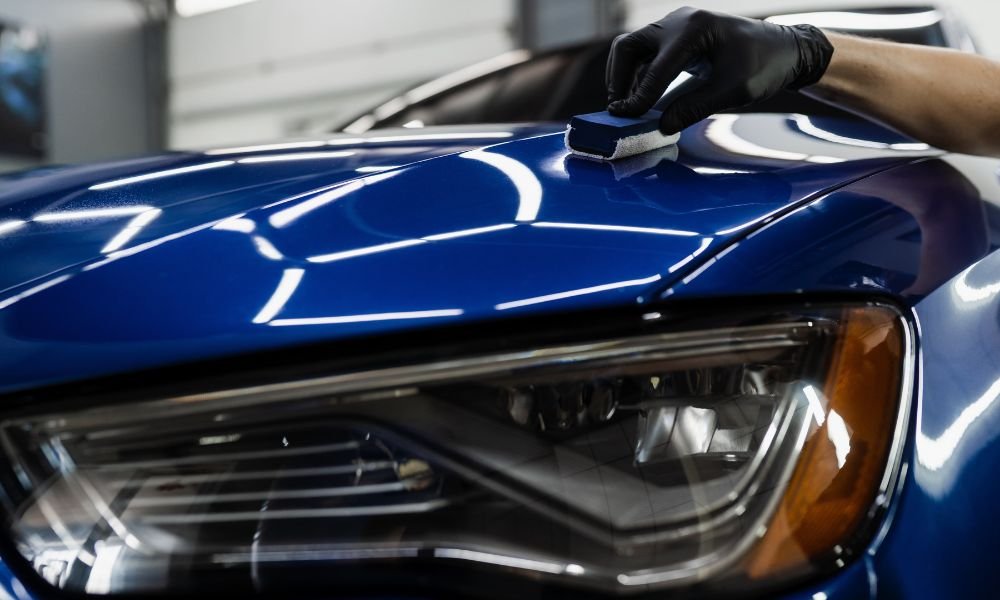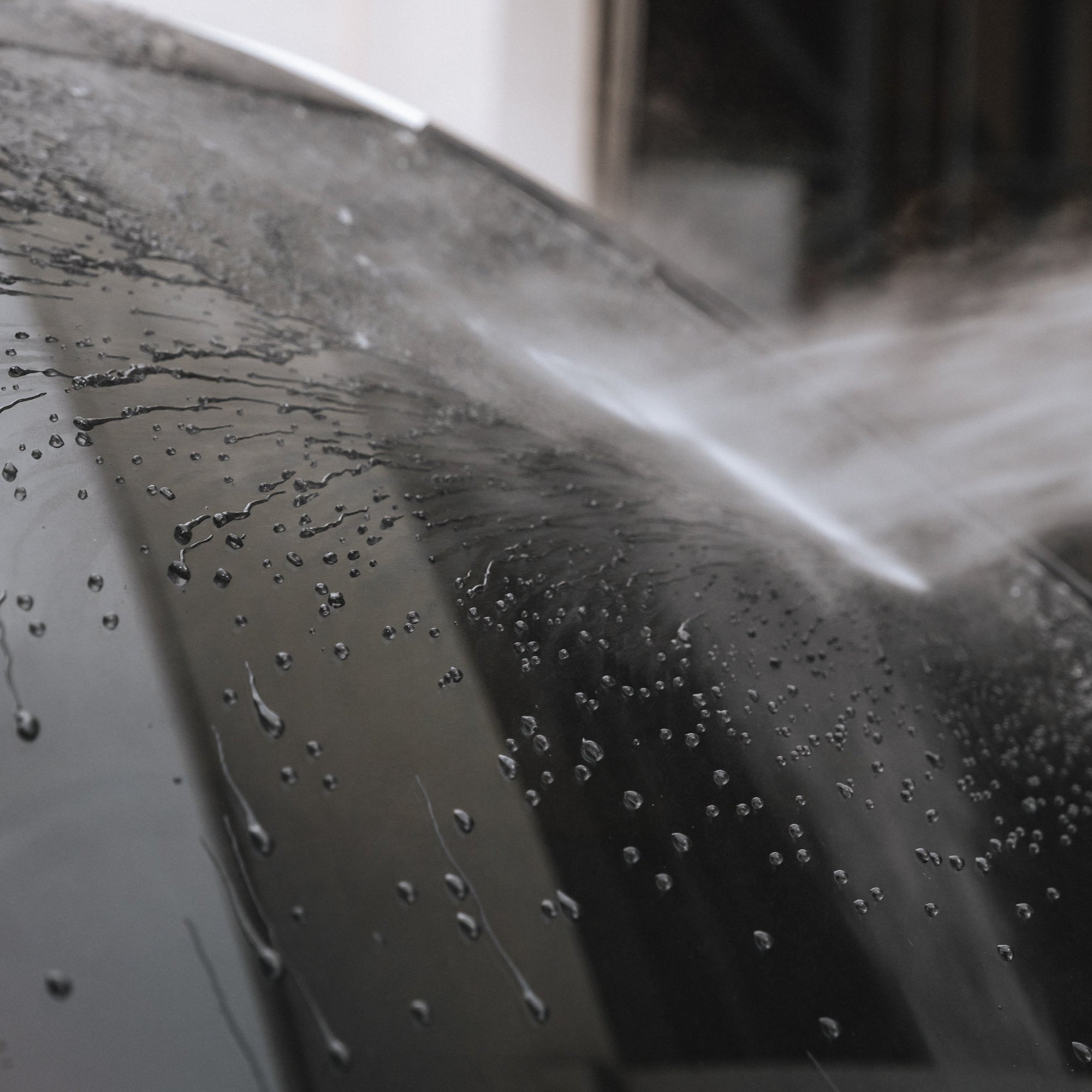The Relevance of Ceramic Coating: Securing Your Automobile's Exterior With Accuracy
In an age where preserving the useful and visual integrity of your car is extremely important, ceramic finishing arises as a crucial solution. With its distinct bonding properties, ceramic covering uses a degree of defense that much surpasses conventional waxing techniques.
Advantages of Ceramic Coating
When it comes to preserving an auto's visual charm, ceramic finish uses considerable advantages. By forming a semi-permanent bond with the vehicle's paint, ceramic coverings effectively avoid oxidation and fading, guaranteeing that the automobile preserves a glossy, showroom-like finish for an extended period.
Along with its safety qualities, ceramic covering provides amazing hydrophobic buildings, causing water and other fluids to grain off effortlessly. This feature streamlines the cleaning procedure, as dust and particles are less likely to comply with the surface area, reducing the frequency and effort required for maintenance. Moreover, the finish's resistance to chemical stains from acidic impurities like bird droppings and tree sap is another significant benefit, decreasing potential paint damages.
Ceramic layers also improve scratch resistance, supplying a layer that can absorb small abrasions and swirl marks. This feature is especially beneficial in preserving an immaculate surface, lowering the possibility of noticeable imperfections and protecting the honesty of the vehicle's paintwork gradually.

Exactly How Ceramic Covering Functions
Understanding the auto mechanics behind ceramic coating exposes its effectiveness as a safety solution for cars. Ceramic finishes are basically fluid polymer applications that chemically bond with a vehicle's factory paint, producing a safety layer. This layer functions as an obstacle against environmental contaminants such as ultraviolet, gunk, and dust rays, which can weaken a vehicle's exterior in time. The essential element in ceramic finish is silicon dioxide (SiO2), which stems from quartz crystals and is recognized for its exceptional firmness and longevity.
Application of ceramic finish involves a thorough process. This guard enhances the cars and truck's gloss and hydrophobic residential properties, facilitating much easier cleaning by triggering water and impurities to bead and slide off easily.
Furthermore, the layer's molecular structure supplies resistance to small scratches and chemical spots. Unlike waxes or sealers that sit on top of the paint, ceramic coatings integrate with the surface area, using long-lasting security. This assimilation is fundamental to its efficiency, ensuring the automobile's coating remains beautiful for several years.
Comparing Ceramic Coating to Alternatives
In the world of auto protection, ceramic covering stands as a powerful choice when compared to conventional options such as waxes and sealers. While waxes supply a short-lived glossy finish, generally lasting just a few weeks to months, ceramic layers provide a longer-lasting solution, typically sustaining for several years. This longevity is credited to the chemical bonding that happens when ceramic layers are used, developing a solid layer that is resistant to ecological dangers.
Contrastingly, sealants, although more resilient than waxes, still drop short of the robust defense supplied by ceramic finishes. Sealants can generally last for approximately a year, giving a synthetic shield versus specific elements. They lack the premium hydrophobic residential properties and UV security that ceramic coverings deliver.
Furthermore, ceramic layers use boosted scratch resistance, which neither waxes nor sealers can effectively match. In recap, while conventional waxes and sealers offer fundamental defense, ceramic coverings provide a comprehensive, long-lasting remedy that considerably boosts straight from the source and preserves the lorry's exterior coating.
Application Process Explained
Using ceramic coating to an automobile requires a precise procedure to make certain optimal results and sturdiness. The preliminary action includes completely cleaning up the automobile's surface to eliminate dirt, grease, and previous waxes. This is essential for making sure the covering sticks effectively. A pH-neutral hair shampoo and a clay bar therapy are commonly utilized to accomplish a beautiful surface. As soon as cleansed, the automobile is dried and polished to remove any kind of flaws, as any type of existing scratches or swirls can come to be extra noticable after the finish is applied.
Adhering to surface area prep work, the application of the ceramic layer starts. The finish is commonly used in a climate-controlled atmosphere to avoid dirt bits from deciding on the fresh cleansed surface. Making use of an applicator pad, the ceramic finish is applied in tiny areas to guarantee also coverage. It is essential to comply with the maker's guidelines relating to the suitable healing time and application thickness.
After application, the finish calls for a certain curing duration, during which the automobile needs to be safeguarded from water and impurities. This healing process can differ depending on the item but normally ranges from 24 to 48 hours. Inevitably, this detailed process is critical in attaining a glossy and resilient surface.
Upkeep Tips for Long Life
To keep the longevity of a ceramic layer, adherence to a disciplined maintenance routine is essential. Regular washing is critical; make use of a pH-neutral cars and truck hair shampoo and soft microfiber mitts to avoid abrasions. Stay clear of automatic automobile cleans, as their extreme brushes can endanger the layer's integrity. Instead, select a hand wash to ensure extensive yet gentle cleaning.
Post-wash, drying out the vehicle with a clean microfiber towel prevents water spots that may break down the coating gradually. In addition, apply a ceramic finishing booster every couple of months. These boosters enhance the hydrophobic buildings and boost the layer's safety capacities, guaranteeing it remains reliable versus pollutants.
Remember that car parking locations play a crucial duty in upkeep. ceramic coating. Whenever possible, park in shaded locations to minimize UV direct exposure, which can slowly compromise the finishing. For long-lasting storage space, think about using an automobile cover for added defense versus ecological aspects
Verdict
In conclusion, ceramic coating serves as an essential protective layer for automobile outsides, supplying long-lasting defense against environmental factors such as helpful site gunk, dust, and uv rays. Comprehending the application procedure and sticking to upkeep suggestions are necessary for taking full advantage of the durability and efficiency of ceramic finish.
When it comes to maintaining a vehicle's aesthetic appeal, ceramic covering provides significant advantages. By forming a semi-permanent bond with the vehicle's paint, ceramic coverings efficiently stop oxidation and fading, making sure that the cars and truck preserves a glossy, showroom-like finish for an extended duration. Ceramic finishes are essentially liquid polymer applications that chemically bond with a vehicle's manufacturing facility paint, developing a safety layer. In summary, while traditional waxes and sealers use fundamental protection, ceramic layers offer a detailed, long-lasting service that discover here considerably protects the car and enhances's outside surface.
